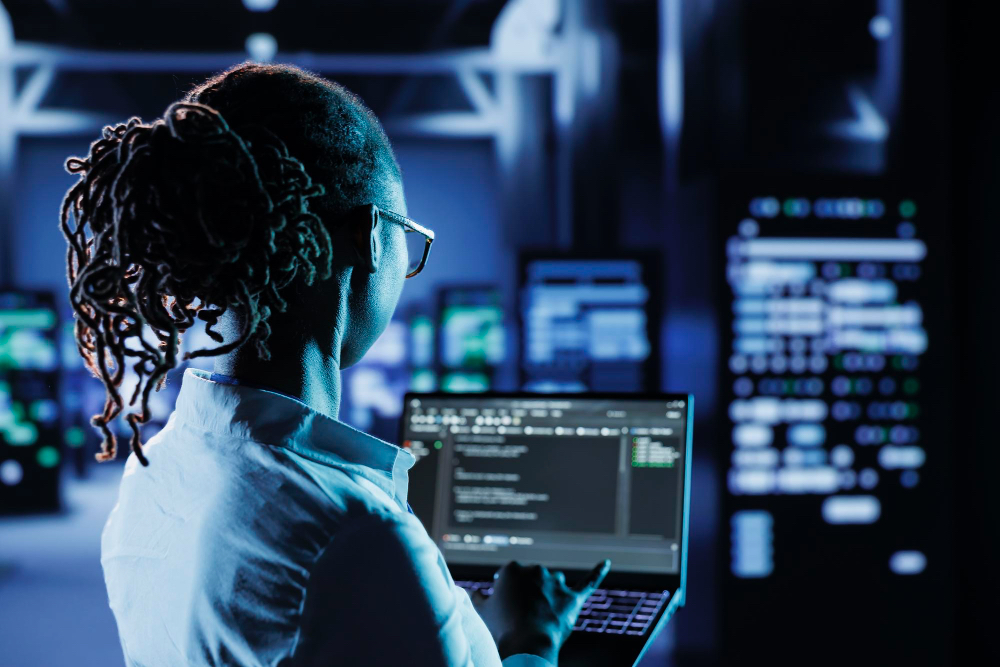Cybersecurity is often viewed through the lens of technology – firewalls, encryption, and antivirus software are the tools we typically rely on to protect our digital environments. However, a crucial aspect often overlooked in this equation is the human element. Often viewed as the weakest link in any security chain, employees, being on the front line of defence, are the most vulnerable to cyber threats, particularly social engineering attacks. The psychological toll on those who fall victim to such incidents can be profound, leading to stress, shame, and decreased job satisfaction. To bolster cyber defence, it is essential to move away from the mindset that people are the problem toward one of seeing people as an important and intrinsic part of the solution. This is where third-party cybersecurity providers can play an essential role, not just in fortifying digital defences but in helping businesses to foster a culture of support and awareness that effectively strengthens the human element of cybersecurity.
The psychological impact of cybersecurity incidents
Cybersecurity incidents can have devastating consequences not just for organisations but also for the individuals involved. Employees who fall prey to phishing scams or other cyberattacks often experience feelings of guilt, shame, and fear. They may worry about their job security, feel isolated, or become overly cautious in their use of technology, which can decrease productivity and increase stress levels.
The emotional toll can have a significant impact on the mental health of employees, which makes cybersecurity awareness more important than ever. Where previously this may have been an exercise designed to tick a compliance box, today it is a critical element in not only training people to understand the threat but in defining and creating a culture within the organisation of the importance of cybersecurity. The foundations need to be in place, built on an understanding of the consequences of cyberattacks.
Enlisting outside help
Third-party cybersecurity providers are uniquely positioned to address the human element of cybersecurity. They bring specialised expertise and resources that many organisations lack internally, particularly in the areas of Human Resources (HR) and learning and development. These providers can implement comprehensive training and awareness programmes that go beyond the basics of cybersecurity hygiene to address the psychological and emotional aspects of cybersecurity.
A well-designed cybersecurity awareness programme should cater to the diverse needs of employees. It should include real-world scenarios that employees might encounter, fostering a deeper understanding and empathy among all staff members. By simulating phishing attacks or social engineering attempts, employees can experience firsthand the tactics used by cybercriminals, which helps to demystify these threats and reduce the fear associated with them.
Building a culture of support and awareness
Creating a culture of cybersecurity requires more than just training; it requires a shift in mindset. Employees should not be treated as liabilities who might accidentally cause a breach, but rather as integral parts of the cybersecurity defence strategy. This shift in perspective can help to build “cyber self-esteem” among employees, making them feel more confident and less fearful of engaging with technology.
An expert third-party provider can assist by helping organisations design programmes that cater to the needs of employees, including their emotional and social development. These programmes should recognise that employees have different personality traits, cognitive biases, and risk perceptions. For instance, some employees may be naturally more cautious, while others may be more inclined to take risks. Training programmes should be tailored to address these differences, ensuring that all employees feel supported and understood.
Additionally, third-party providers can offer mechanisms to reinforce this culture of support, such as Multi-Factor Authentication (MFA) systems, data leak prevention tools, and network intrusion detection systems. By combining technical solutions with a human-centric approach, these providers help create an environment where employees feel empowered to make informed decisions about their cybersecurity practices.
A top-down approach to cybersecurity culture
Leadership plays a critical role in shaping cybersecurity culture. Policies and procedures come from the top, and the way these are communicated to employees can significantly impact their effectiveness. If cybersecurity is treated as a mere compliance exercise, employees are likely to view it as an inconvenience rather than a priority. On the other hand, if leadership emphasises the importance of cybersecurity and actively participates in awareness initiatives, it can create a positive ripple effect throughout the organisation.
Cybersecurity is not just about technology but about people. The human element is both the greatest vulnerability and the greatest asset in an organisation’s cybersecurity strategy. Third-party cybersecurity providers can play a pivotal role in addressing this human element by supporting leadership, offering training, resources, and support that go beyond traditional cybersecurity measures. By fostering a culture of awareness and support, these providers help organisations build a resilient cybersecurity posture that empowers employees, reduces fear, and ultimately enhances overall security.
By Nemanja Kristic, Operations Manager – Managed Security Services at Galix and Nikishca Moolman, IS Consultant at Galix










